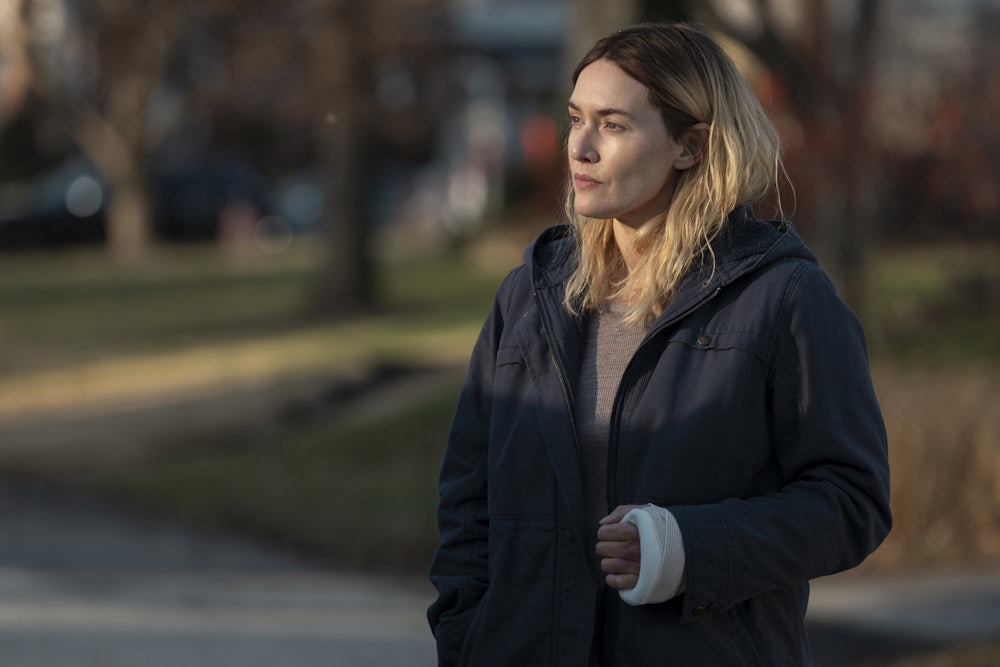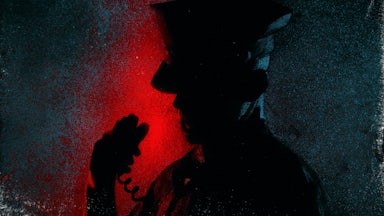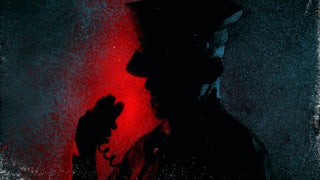If you don’t want to know the ending to Mare of Easttown (or Sharp Objects, or The Woman in the Window, or the very last case of Jane Tennison’s career in Prime Suspect), please navigate away from this page now. If you’ve seen one of these titles, however, you may well have seen them all. The story of a somewhat grizzled, attractive middle-aged woman attempting to solve a case whose answer is precisely occluded by her own most intimate trauma tends to end a certain way.
Mare of Easttown concluded this Sunday with the revelation that Ryan Ross, the child who deals with his problems by hitting them with a lunch tray, was the one who shot Erin McMenamin, the girl whose killing in the first episode kicks off the series. He did it for a twisted and highly credible reason: the type of masculinity he’s grown up around in a hardscrabble region of Pennsylvania.
It’s a satisfying ending, neatly set up by the unresolved mystery that opened the series—the identity of the ferret-faced prowler, or prowlers, who lurk behind the Carrolls’ house—and concealed by the false confessions of Ryan’s relatives and interwoven plots like the Katie Bailey case. The clues about Ryan’s secret are also written into his character’s behavior, communicated through glances and tension and things left unsaid. But the biggest sign pointing toward who killed Erin always lay with Mare herself.
Mare Sheehan, though distinctive, is the latest in a lineage of fictional women sleuths whose gender strongly informs their investigatory methods. The first fictional woman detective seems to have appeared in novels of the 1860s, about two decades after Poe created Dupin, with magnificently on-the-nose titles like Andrew Forrester’s crime romp The Female Detective. His heroine, “G.,” passes unnoticed in and out of her suspects’ lives, for example waiting on a certain Mrs. Flemps in the guise of a milliner, “resulting in two caps and a bonnet for that lady.”
It’s precisely this talent for anonymity that the best women detectives of later generations exploited, too. The elderly ladies of “cozy mystery,” for example, are descendants of Agatha Christie’s Miss Marple, whose real identity as a little old lady was all the cover she needed to gather the information a policeman could not. P.D. James’s Cordelia Gray and others were younger and harder-bitten, but they retained the core feature of exploiting the prejudices and assumptions of men in order to find out their secrets.
What Mare and her contemporaries share with these predecessors is the unacknowledged insiderhood of their gender, which has changed over time but never disappeared. Where the classic masculine detective of popular entertainment is a social outsider and expert in the art of disguise, like Sherlock Holmes, his female counterpart is genuinely part of the furniture—especially if she’s of a certain age.
A middle-aged woman can be at the center of every community she’s a part of—Mare was even the reluctant star of her high school basketball team—and still go through her daily life virtually unnoticed. It also means she can carry an almost infinite number of subplots with her through the storyline, since, again, a woman can be five different people at once, though never known completely by any.
In Mare of Easttown, Kate Winslet shows Mare having interaction after interaction, building subplot upon subplot, until the show shudders under the weight of what could have been several seasons’ worth of material. It’s a joy to watch her build the opacities into Mare’s character, and juggle so much backstory. Slowly, the loss of her son Kevin to suicide emerges into the plot, and Winslet’s thousand-mile vaping stare turns out to be just one manifestation of the pervasive guilt afflicting Easttown’s women.
Take our heroine’s best friend, Lori, played by the excellent Julianne Nicholson. In the last episode of the season, Lori sits beside her son Ryan as he tries to explain to the police how he got the idea to shoot his father’s mistress. He was worried his family was going to be torn apart, he says—especially after what happened last time, when his mom moved out of the house. This is the moment Lori’s eyes close, as she silently blames herself; for moving out that one time, or maybe for going back to her husband after the first time he cheated, and for the intolerable circumstances in which she finds herself.
Whodunnits tend to express common kinds of guilt that are not discussed in polite society. The country house murder mystery stages a conflict between different classes, for example, and their denouements often disclose secret romantic or familial relationships that compromise the social order. In the case of the child gone bad, caught by the woman detective whose own grief over a child has led her away from the truth, the child appears poisoned by the mistakes and secrets of their families. So the potential disasters of the future—a drug addiction, say—will be ledgers of the mother’s faults.
This character type offers some great story arcs for actors like Amy Adams or Winslet, who have drifted away from romantic lead parts. It’s the kind of role that demands experience, because for sleuths like Mare their middle age is key to their insight across generations.
Just like Camille, the journalist grieving her sister in Sharp Objects, and Anna, the grieving agoraphobe in Netflix’s much-delayed The Woman in the Window—both red-eyed alcoholics played by Adams—Mare was tasked with solving a murder that took place in her family’s immediate social milieu while also dealing with the loss of a close relative. And just like them, her refusal to look directly at her own intimate pain makes her unable to see until the last possible moment that the murderer is the person she least suspected: It’s only when she can talk about the lost child that the mists clear, like vape clouds parting in the frigid Pennsylvanian dawn, to reveal the horrible truth.








